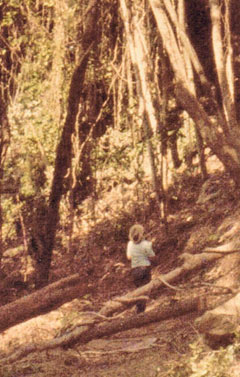1983 Blockade
On 30 November 1983, Douglas Shire Council workers arrived at Cape Tribulation to start work on a coast road to Bloomfield, the missing link. A small group of local protesters opposed to construction of the road were there to meet them. Many of them were members of the Douglas Shire Wilderness Action Group (WAG), which was formed a few months earlier when plans to build the road were announced. They were committed to non-violent direct action, and chose to oppose the road through peaceful means.
The lack of planning that council had undertaken quickly became apparent no survey had been done and they were puzzled about the best way to proceed. News of the protest brought the police and the media to the site. After a couple days of inaction, the Council got to work, protesters held fast, and the first arrests were made. The early protests were brushed aside and bulldozers entered the national park. For the protesters, things seemed hopeless. Enter the NAGs.
The Nomadic Action Group came from northern NSW where they had formed in the late 1970s to prevent logging of rainforests. They had travelled to the Franklin dam protest in Tasmania. They brought to the Daintree campaign, commitment, experience and some radical protesting techniques. They took to the trees, using high tensile steel chain to get to the canopy, and occupied holes they dug in the path of bulldozers and machinery.
Meanwhile, Douglas Shire Council commenced work from the northern end. After two days of disruption from protesters, bulldozed steadily moved south towards Cape Tribulation. But after three weeks, the wet season descended and protesters launched the battle for Red Hill. After a muddy stoush, Council and the Police pulled out. The protesters declared the Cape Tribulation National Park free from destruction for all time, and celebrated their victory. They knew, however, that it would be short lived.

